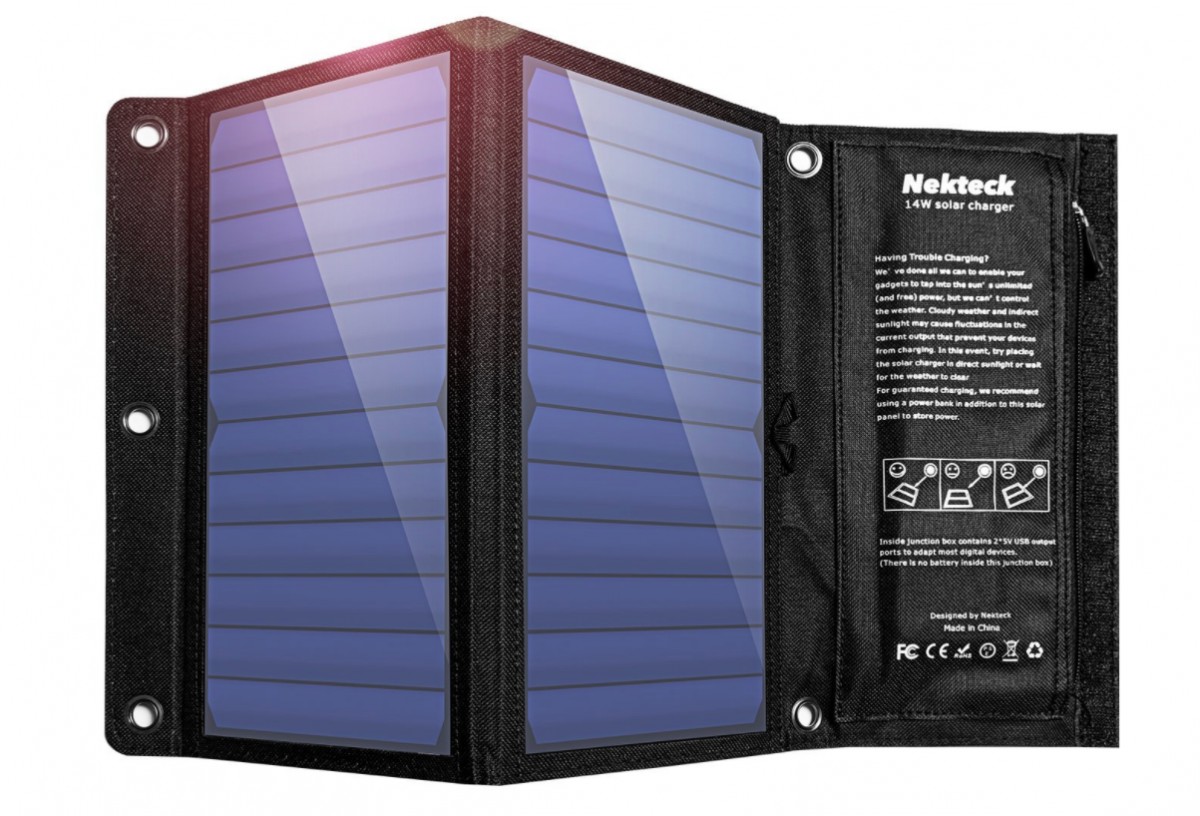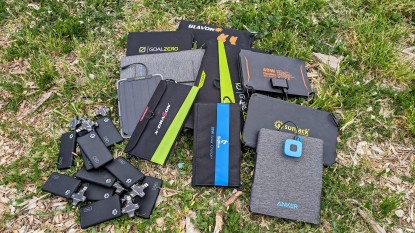Nekteck 14W Review
Our Verdict
Our Analysis and Test Results
Overall, the Nekteck 14W proved to be a relatively efficient portable panel, but it failed to stand out in any particular category. This model came up short, in comparison to its competitors, in charging speed and charge interruption recovery. On the plus side, the panel is inexpensive and can charge multiple devices at once, making it an excellent budget option.
Performance Comparison
Charge Interruption Recovery
When we first set the 14W Nekteck panel out in the midday Southern Utah sun, its input from one USB outlet read 6W. After 10 minutes, the panel had charged our test battery 2%. The next ten minutes the panel went in and out of the sun, and its output went down to .6W, and the panel didn't charge our battery past 2%. The other panels in wattage category (the Anker 15W and the Instapark Mercury 10W) both managed to get the battery charged to 3%, and recovered a charge much better than this contender. The battery went into no-charge mode and did not charge our device until we unplugged and re-plugged it back in. We experienced a similar issue with the RAVPower 16W as it struggled to hold a charge in and out of the sun.
Charging Speed
Unfortunately, the Nekteck also came up short in our race-to-charge tests as well. When set out in the full sun at the same time, the Nekteck 14W, Anker 15W, and Instapark 10 all charged the same external battery as we kept track of the time. The Nekteck was behind the whole time and did not fully charge the battery even after four hours in the sun, whereas the Instapark and Anker 15W both managed to reach 100% on the battery easily by four hours. The same went for the iPhone, with the Nekteck lagging behind in charging speed. The Anker 15W has more power, and the Instapark Mercury 10 has more solar cell surface area, both out charging the Nekteck in their own way.
Multiple Device Charging Speed
Once two batteries were plugged into the Nekteck in full sun conditions, both cells struggled to receive a consistent charge from the panel. Since a decent amount of power is lost due to inefficiencies in the system, the panel was only delivering a small wattage to each battery, even in full sun. It is for these reasons that we found it to be best to use one port to its total capacity and charge one device quickly, rather than taking double the time to charge two gadgets slowly. The RAVPower 16W had a similar loss of efficiency when two devices were used. The Anker PowerPort 21W scored the highest out of all contenders for this metric.
Durability
During our testing period, we didn't run into any issues with the Nekteck's ability to keep up in the field. The panels are durable and didn't warp after prolonged sun exposure, which is a good thing. The closures and carabiner loops also sustained our tests, showing very little wear and tear over the three months we used the Nekteck in the field.
Weight & Portability
The Nekteck scored highly in weight, as it is lighter than the bulky Instapark Mercury 10 and more compact both the Anker 15 and the Instapark Mercury 10. It weighs in at 14 oz, which is around 2 oz heavier than the Anker 15 and 2 oz lighter than the Mercury 10. Weighing less than 16 oz puts it in a lightweight class, as the majority of the large capacity panels weigh 16 or more ounces. The Nekteck has two panels and a sleek storage pouch. It is very thin when folded up which makes it easy to carry. It fits into a backpack or on the bottom of a duffel bag without too much impact, making it a great panel for travel.
Best Application
For someone who is not sold on the solar panel idea and doesn't want to throw down cash on a bulky, 20W panel such as the X-Dragon 20W, the Nekteck is a good option. It has two USB ports, but because it has a fairly low wattage, it is more efficient at charging one device at a time. This panel does well charging a single device, so it is a good option for a single traveler or minimal charging needs.
Value
At only $40, the Nekteck is a panel with incredible value. It is inexpensive and compact and has two USB ports. This is a nice feature if you are planning on using an external battery pack. You can charge both the battery and a small device, like a cell phone simultaneously. This panel is less efficient overall than the Instapark Mercury 10W but is comparable in price and size.
Conclusion
Overall, the Nekteck 14W is a decent panel for the price, but it lacked in our performance comparisons. If you want an inexpensive panel that will be able to accomplish simple charging tasks, then the Nekteck is the panel for you.








